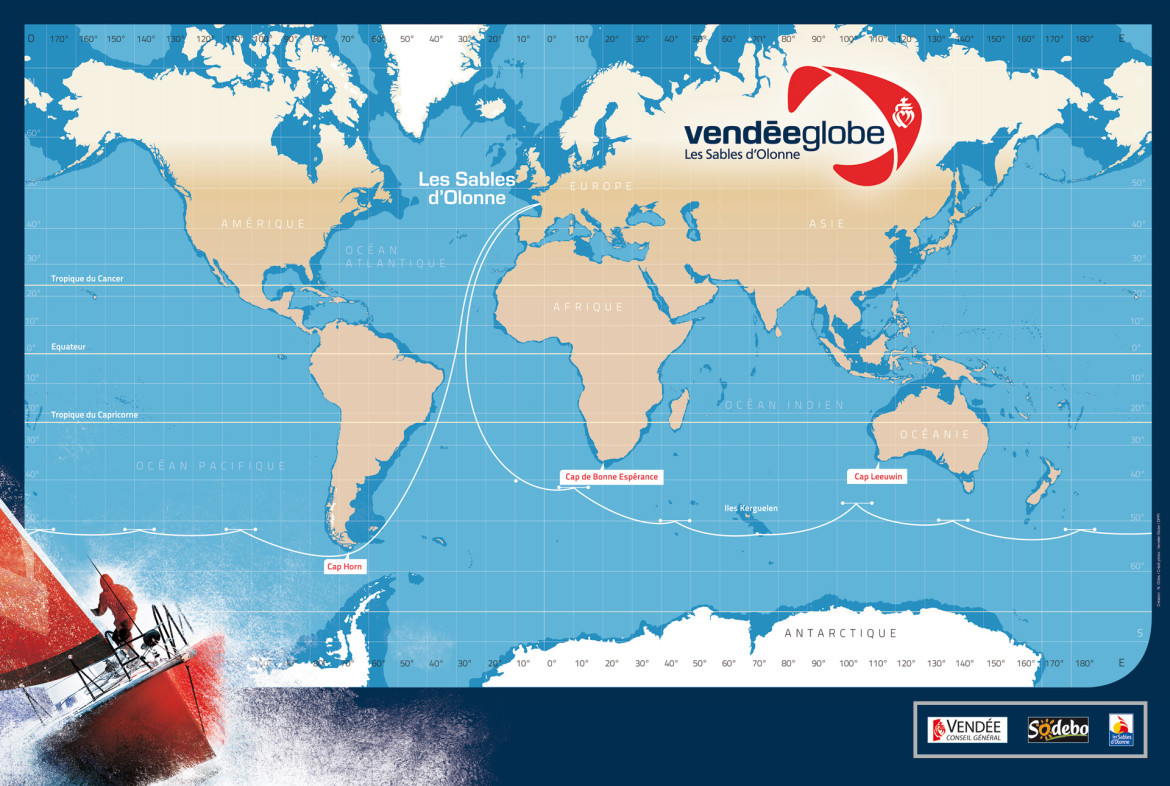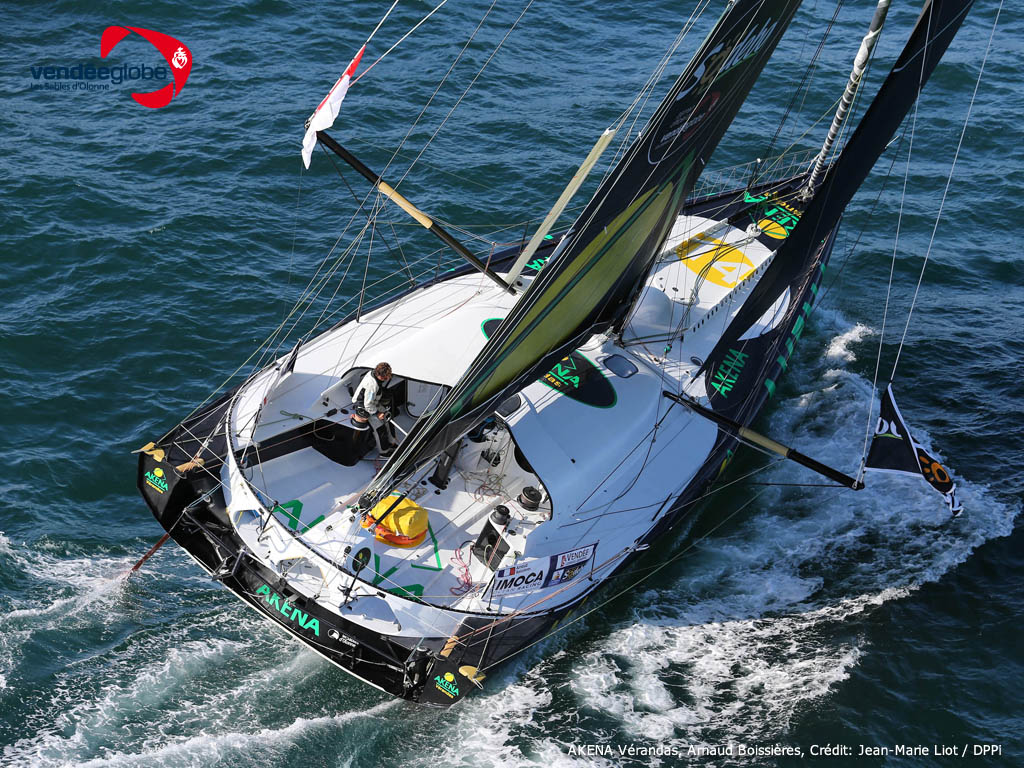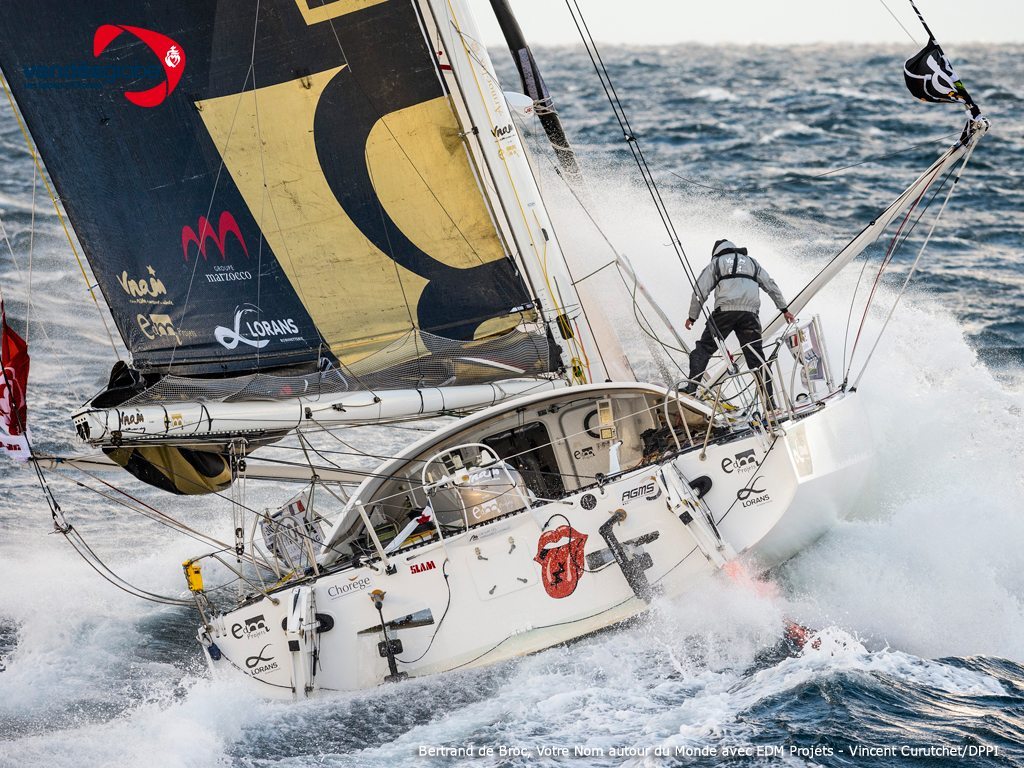With the recent completion of the America’s Cup, competitive yachting has received a lot of attention. However, there’s another race called the Vendée Globe which presents contenders with a test of Herculean proportions. Every four years, single-manned vessels leave port at Les Sables d’Olonne, France, and circumnavigate the earth for three months straight, without ever coming to port. Docking equals immediate disqualification.

This race reminds me of The Dakar Rally in a way, but seems much more daunting. Whereas rally raids require an almost superhuman level of endurance, persistence and courage; it’s still a team effort. Every night, there is a camp for racers and riders to rest, while the team works on their vehicles. The race resumes when the sun comes up. However in the Vendée Globe, these sailors are navigating the planet’s oceans, completely alone.
The Vendée Globe was founded by Philippe Jeantot and began in 1989, but isn’t the first of its kind. The very first one was the Sunday Times Golden Globe Race in 1968-69, which only ran once and was steeped in controversy. The Velux 5 Oceans race has been taking place since 1982, back when it was called the BOC Challenge. Jeantot won it twice. The main difference between the Vendée Globe and the Velux 5 Oceans is that the latter allows for stops at port. Both are grueling but the non-stop format makes the Vendée Globe a superlatively difficult psychological test, as well as a physical, emotional and intellectual one. You have to be a special kind of person to handle the strain that comes with being under continuous pressure and alone at sea.

There is constant danger from weather, collisions other boats or icebergs (yes, icebergs), whales, equipment failure, accidents, and exhaustion. According to a report by Bernie Goldberg for HBO’s Real Sports with Bryant Gumbel, Englishman Alex Thomson only gets twenty minutes of sleep every three to four hours; and has trained for years, in order to function at full capacity with minimum rest. Computers and telecommunications devices help participants to stay in touch with their families and support crews. However if any of those devices failed, for whatever reason, the intrepid mariners would be on their own. Often, they’re so far out at sea that rescue comes at the hands of their own opponents. Many fail to finish the race, and so far three have lost their lives in the attempt. Undoubtedly you’re asking yourselves, why?
It’s entirely possible to pay your bills without taking to the high seas for months at a time, like they do in the Vendée Globe. Truth be told, it’s the same question that is asked of race car drivers, motorcycle racers, extreme athletes, adventurers and others. The answer is the same from most, if not all of them: this isn’t what they do, but who they are. Whether it’s conquering the race called the “Everest of the Seas” or climbing the actual Mount Everest, racing Pikes Peak, or setting a new land speed-record on the Bonneville Salt Flats; this kind of life isn’t for glory hounds. These men and women would be doing what they do, whether cameras were filming them or not. They don’t risk themselves to complete incredible feats for our entertainment alone. They find no fulfillment in anything else. It’s not our place to disparage or exploit their accomplishments, but recognize their experiences as proof that we mere mortals are capable of anything.



